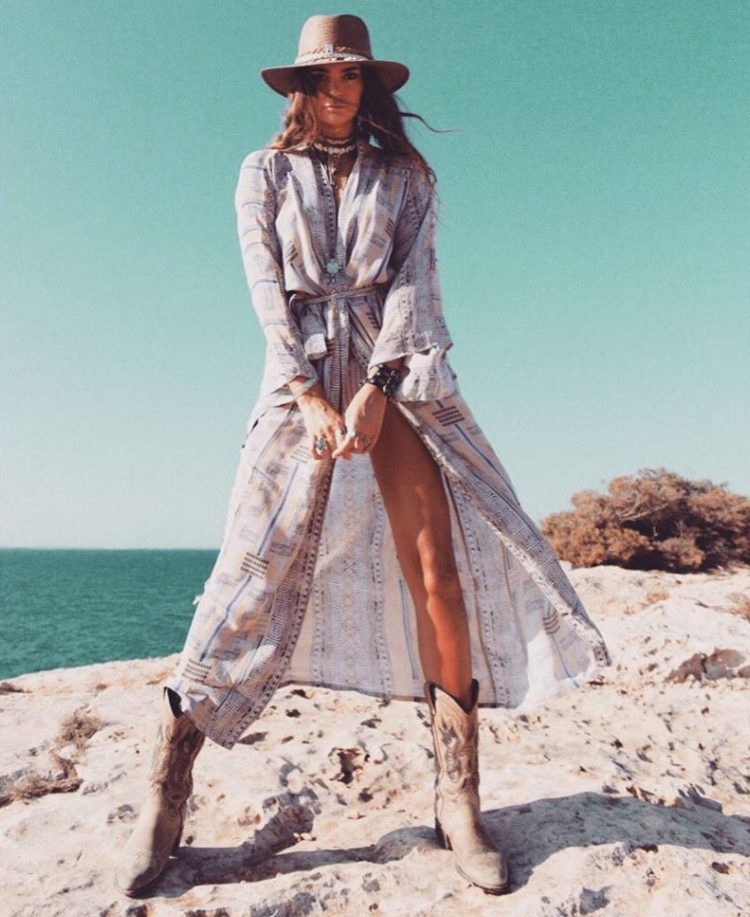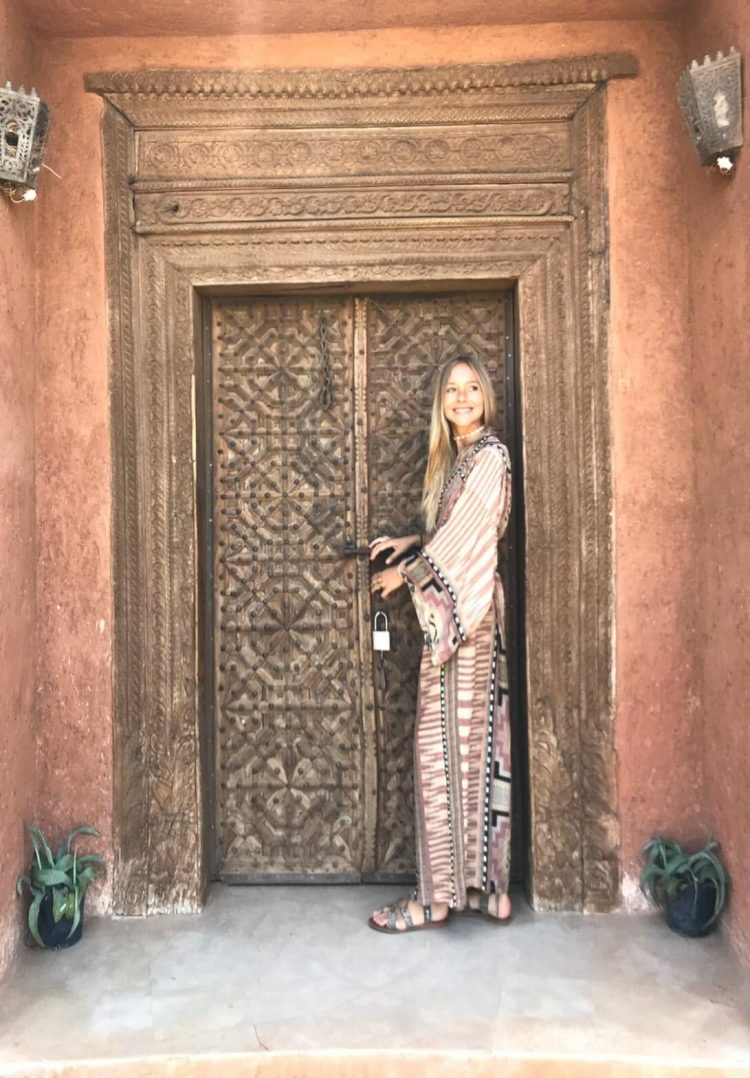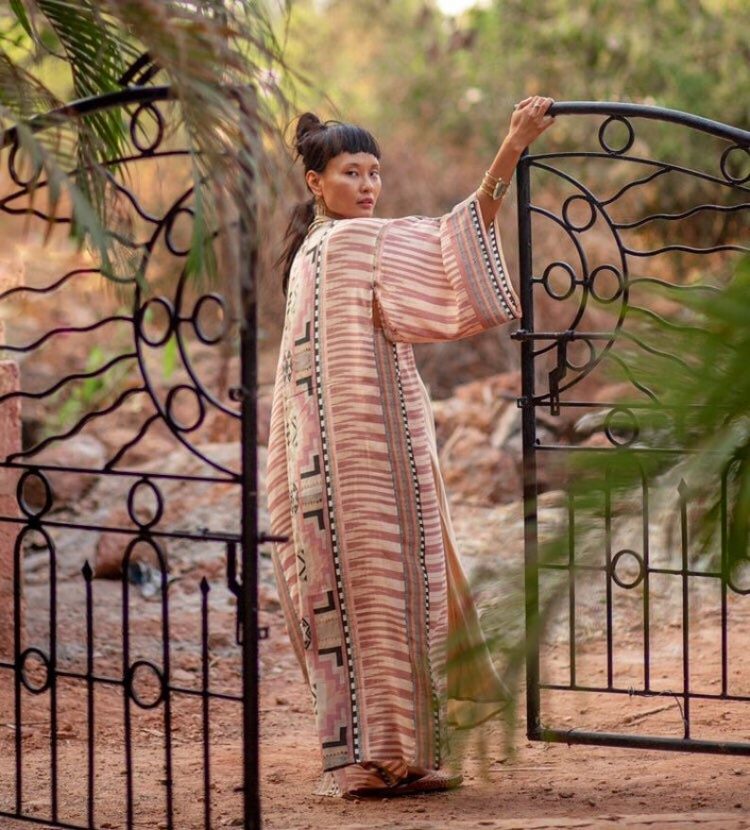
The kimono is an iconic Japanese garment known all over the world. A symbol of refinement, luxury and delicacy, it was originally an underwear, before emancipating itself and investing the most lavish events. The kimono is one of the few clothes to have passed through the centuries, to reach us in its intact form and never gone out of fashion! Even today, the kimono is everywhere, rooted in tradition,in our homes and even on the catwalks of the biggest brands in vogue.
WHAT DOES KIMONO MEAN?
The word kimono is broken down as follows: “kiru,”which means “carry on yourself” and monomeans “thing.” So kimono means “thing you wear about yourself.” There are three forms of kimono:
- The kosode,with small, narrow sleeves
- Theosode,whose arms are wide open
- The furisode,whose very long sleeves have large openings
ORIGINS AND HISTORY OF THE KIMONO
The first traces of the kimono of course appear in Japan in the 7th century while Japan is under Chinese influence. At that time, it was called kosode, it was an underwear that was worn with trousers, a long skirt or a large wide jacket. In the high aristocracy, the kimono is worn under layers of clothing (up to 12!) that are layered and sewn together each morning.
In the 8th century, during the Nara period,dress codes were redefined and the kimono now indicates who one is and what place the individual occupies in society. The Heian period (794-1185) was marked by the diplomatic rupture between Japan and China. At that time, the kimonos are coloured and related, they come back to the taste of the day and its remarkable by their finesse. They change with the rhythm of the seasons, the occasion, the social rank of the person or his age.
There is also a differentiation between kimonos for men and women. From now on, the kimono “externalizes” and is coated with woven and sumptuous motifs. In the 14th century, during the Muromachi period (1392-1573), the kimono was worn over other garments. It is getting thicker and thicker to protect from the cold. This is the dress worn by women of high society during official ceremonies. Out of respect for tradition, single women wear a short-sleeved kimono, and the sleeves are lengthened after the wedding. The bride’s mother wears a black kimono with patterns below the waist for the wedding. In the Edo period between 1600 and 1868 the kimono was the traditional Japanese dress par excellence. It is now worn by all, men and women regardless of their age, condition, morphology. Major fashion houses opened in Kyoto and the rest of the Empire. Peace is relative, merchants are getting richer and now commanding kimonos as resplendent as those of the nobility.
Women wear extravagant outfits in terms of embroidery, dyeing and weaving. The decorations on the bottom of the garment are colorful, and there are also pretty patterns at the collar. The center of the kimono, however, is not very decorated because it is hidden by the belt. Between 1750 and 1850, that is to say in the second half of the Edo era, the kimono is simplified, it gradually loses its stylistic extravagance. The ornaments and patterns are simplified,and the kimono now features geometric patterns. The colors are more neutral. There is more and more yukata, cotton kimonos. Duringthe Meiji era,between 1867 and 1912 theWestern influence and the opening of Japan undermined the tradition of wearing the traditional kimono. It is transformed to satisfy the taste of Westerners and cultures merge to create clothes with more abstract lines and patterns. Finally, at the beginning of the 20th century, it was the Shôwa Era. The kimono is only worn for special occasions. The Japanese who no longer necessarily have the means or the desire to invest fortunes in this festive dress rent for the big occasions. Today, the kimono can be found in various forms, especially in fashion.

MAKING TRADITIONAL KIMONO
The design of the kimono has several steps
WEAVING
The fabric can be solid or have coloured patterns, the fibers used can all be the same size or be worked to give relief to the final rendering.
Rolls of several meters are weeded, always 35 cm wide. The rectangular pieces are then assembled for the manufacture of the kimono.
THE DYE
At first, we define the predominant color, then come the details. Steamed fabric with natural powder to give the fabric the desired hue.
The shapes are added thanks to a layer technique and the fabric is embellished with details and frills with brushes. Then the fabric is dried before adding ornaments, such as embroidery, threads or gold leaf. This step can take up to four weeks depending on the complexity of the pattern.
THE ASSEMBLY
Finally, the pieces are assembled together, on the left front and back side, on the right side, the sleeves, the collar and the okumi, a piece placed at the front under the collar.

THE KIMONO OF GEISHAS
Here we are talking about the traditional silk and handmade outfit, of great value, up to several thousand dollars! These kimonos are different from the classic kimonos worn by the population, they are longer and otherwise decorated. They are closed by the obi,the traditional belt. The art of kimono for geishas is governed by a very formal and complex code.
First, the outfit and patterns differ depending on the geisha’s level of experience. Young geishas, or maikos,wear furisode-shaped kimonos with colorful and original patterns. This one is embellished with a belt, obi darari, which measures up to 10 meters long. It is tied in the back in a wide knot that goes up to the shoulder blades and falls back to the ground forming a drag. This kimono is called hikizuri.
The maiko wear the traditional Tabi, which are white socks, as well as very thick wedged wooden sandals. The more experienced wear the shorter tomesode,with shorter sleeves and embroidered with more subtle colors and patterns, with a white code that goes up higher at the neck. Their obi is knotted into a so-called “drum” knot, as folded over itself and without a trail. Their wooden sandals called zori have a thinner sole than those of apprentice geishas. The kimono of geishas weighs very heavily, up to 20 kg; they are helped by the only man in the house (okiya) in order to put it on.

THE ART AND SYMBOLISM OF KIMONO
As we have seen, since the Edo era the kimonos are more richly decorated. The motifs are borrowed from the elements of nature,we find flowers, animals that have symbolic meaning.
For example, there are pines or bamboo stems, dragonflies, various flowers, turtles or cranes. The patterns are spaced so that the color takes over and the prints breathe in order to maintain the overallharmony of the kimono.
The motifs are artistic, spiritual or symbolic,for example the crane and the turtle represent longevity. Some prints are symbols of prosperity, energy or happiness.
The decoration of the kimono is so entrenched in Japanese culture that it becomes an art in its own right. Painters such as Nishikawa Sukenobu and Hishikawa Moronubu publish each year catalogues of motifs, inspired by nature through the seasons.

THE KIMONO IN TODAY’S FASHION
From now on, the kimono is only worn occasionally in Japan for ceremonies and parties. However, it is present in the West on the catwalks and in the big luxury houses as well as in fashion magazines. In 2017, the Guimet Museum is exhibiting 150 models of women’s kimonos from the Matsuzakaya collection. The same year Christian Louboutin was inspired by kimono motifs to create boots.
For its spring summer 2018 season, Margiela is honoring the kimono, and major brands such as Balenciaga, Yves Saint-Laurent and Alexander Mac Queen are inspired by it.
